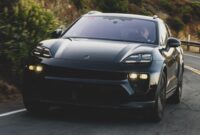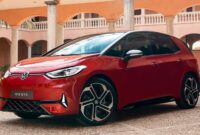You’ll have a hard time finding someone who thinks Mazda’s rotary-electric sports car isn’t gorgeous. Top Gear magazine had the opportunity to interview the talented man who penned the Iconic SP concept. The Zoom-Zoom company’s chief designer Masashi Nakayama talks about how the creative juices came flowing.
As expected, we learn the RX-7 served as the main source of inspiration during the design process. As to why they decided to go with pop-up headlights, the answer was pretty simple: “Why not? It looks cool, right?” Nakayama went on to say that not everything has to make sense as the company strives to deliver a type of design that’s “beyond logic.”

23 Photos
Mazda’s man in charge of design hopes the Iconic SP will make people think of the RX-7, adding he wishes he’ll be given a chance to work on a subsequent production model. The sleek coupe is certainly one of those concepts we’re hoping will get the green light. It just might, considering a dedicated rotary engine team of 36 engineers is working on “attractive cars that excite customers.” Mazda President and CEO Katsuhiro Moro recently declared he wants to “move closer to this dream” of a rotary sports car.
Would a road-going model be a reborn RX or a new MX-5? This new Top Gear interview suggests the former. However, the very same Masashi Nakayama said in October 2023 when the Iconic SP debuted that the performance coupe can be shrunken to the size of a Miata. The showcar was deliberately made bigger than it needed to be. Why? To make a splash at the Japan Mobility Show where it celebrated its world premiere.
We’ll remind you the concept is 164.6 inches (4.18 meters) long, 72.8 inches (1.85 meters) wide, and 45.2 inches (1.14 meters) tall. It weighs 3,197 pounds (1,450 kilograms) distributed evenly between the two axles. It’s substantially larger and heavier than a Miata but Mazda says it can put the hardware in a sports car about the same size as an ND.
A production model wouldn’t be a direct successor to the likes of the RX-7 or RX-8 since the rotary engine would not send power directly to the wheels. Instead, the two-rotor combustion engine would serve as a generator to charge a battery. In the concept, the ICE worked with gasoline, renewable fuels, and even hydrogen. The Iconic SP was technically a plug-in hybrid since it had a charging port for the unspecified battery pack.
The rear-wheel-drive concept had 365 hp on tap, effectively twice the power of a current-generation Miata with a 2.0-liter engine. Mazda already has a production model with a rotary engine that doesn’t have a mechanical connection to the wheels – the MX-30 e-Skyactiv R-EV small crossover.
Should a new sports car arrive later this decade, it would be the 13th performance model with a rotary engine. It’ll be interesting to see whether those nifty headlights will make it to production considering stringent safety regulations have effectively killed pop-up lights. Ferrari did find a workaround by giving the Daytona SP3 sliding “eyelids” as shown in the video below. To be fair, the headlights don’t pop out but the effect is somewhat similar.



